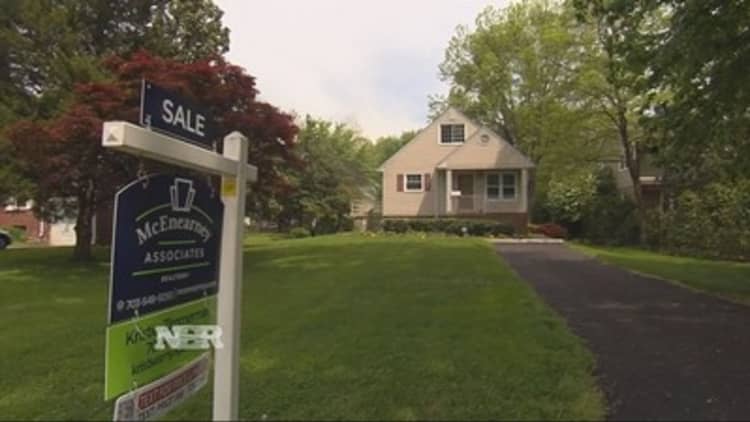
The biggest barrier to a more robust spring housing market is simply a lack of listings, and there may be even fewer than we think, at least fewer homes people want to buy.
Nearly three-quarters of the homes on the market are "stale," which is to say that they have sat on the market for more than a month with little to no interest from buyers, according to a new report from Redfin.
The number of homes for sale rose 2 percent in March from a year ago, according to a report from the National Association of Realtors released Wednesday. That, however, includes both new listings and homes that have languished on the market for months. With demand and sales increasing, there is just a 4.6-month supply of listings; a six-month supply is considered to be a healthy market balance between buyers and sellers.
Of course, all real estate is local, but even in the most sought-after neighborhoods, some houses sit. In the Chevy Chase, neighborhood of Washington, D.C. (not to be confused with the Maryland suburb with the same name), which boasts the top schools in the district, inventory is down 24 percent from a year ago, according to Long and Foster. And yet one home there has been on the market since the end of February.
"Everyone loves it; it's the price," said Ghada Barakat, the Long and Foster listing agent for the property.
Read More
After starting at $1.45 million, the seller, a builder who renovated and is flipping the four-bedroom, 4.5-bathroom home, lowered the price to $1.395 million, which is now bringing more interest. Still, at the higher price points, even in this competitive area, it is hard to sell.
"People cannot come up with the down payment to qualify. Jumbo loans are very tough," added Barakat.
Tight supply in the neighborhood has pushed the median price up 17 percent from a year ago, but sales are down 33 percent, a function of the short supply and so-called "stale" homes. Jumbo loans, those above $417,000, usually require higher down payments.
There is something else at play as well: information. With so many websites and apps pushing moment-to-moment market movement, today's buyers are increasingly data driven. Especially after the epic housing crash that gave birth to all this data, buyer psychology and suspicion are in full swing.
"The trust is broken among buyers. In Denver and Silicon Valley, if the house has been on the market for two weeks, there is something wrong with it," noted Nela Richardson, Redfin's chief economist. "Everyone is afraid to overpay, and the herd behavior in the stock market is something we're now seeing in the housing market."
Read MoreCost of housing soars: How high can it go?
In Charlotte, North Carolina, the scenario is much the same. The supply of properties for sale is at a three-year low, and fresh listings, less than 30 days old, accounted for just over 5 percent of Charlotte's inventory as of March 31, also a low, according to Redfin. In other words, 95 percent of Charlotte listings are stale. Last month, only 55 new properties came on the market, versus 225 a year ago.
Housing supply is not being helped by the home builders either. Housing starts are still well below historical norms, and even the largest home builders are being cautious. Sales of newly built homes, which represent contracts signed in March, fell more than 11 percent month to month, according to a government report released Thursday. The median price of a newly built home, $277,400, is well above that of an existing home, $212,100.


